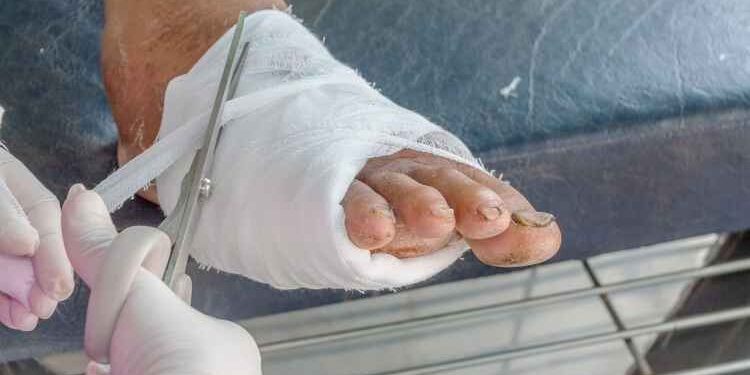A diabetic foot is a chronic wound that can develop when people with diabetes have poor circulation, which prevents the body from healing itself. As a result, they are also at risk for developing severe infections in their feet.
If not caught quickly enough or left untreated, it can lead to amputation, so you seek a specialist for the diabetic foot in Las Olas as soon as you notice symptoms. That’s why people with diabetes need to maintain a healthy lifestyle and keep careful watch over their feet. If you notice any changes in the color, temperature, or sensation, see a podiatrist immediately. Treatment often involves topical treatments like antiseptic solutions, debridement removal of necrotic or dead tissue, wound packing, compression bandages, and antibiotics.
As you wait to receive treatment, you can try different home remedies to help manage the symptoms. However, this is not a solution to the problem, so you should see a doctor for proper treatment. Some home remedies are highlighted below.
- Check the Affected Foot Every day
The severity of a diabetic foot ulcer can change very quickly, so you need to check them regularly. As soon as you notice any changes, involve your podiatrist for proper treatment.
- Clean and Disinfect Your Feet
When you are doing this, make sure that your feet are completely dry after showering. You are more likely to get an infection if your feet are not clean and dry. Use a cotton ball soaked in hydrogen peroxide to clean the affected areas every day, but make sure it’s not near open skin sores because it might sting. After cleaning, use a topical antibiotic cream to help treat the sores and reduce the risk of infection.
- Avoid Smoking
Smoking increases the risk of developing an ulcer by 80%, so avoid smoking if possible. If you are a smoker, take measures to reduce your habit or quit altogether. Smokers have poor circulation, making it harder for the body to deliver oxygen and other nutrients to different body parts, including the feet.
- Use Moisturizers
You have to make sure that your feet are always moisturized because it helps them cope better with pain and prevent cracking. Remember that you can also use petroleum jelly, glycerin, lanolin, or any other lubricating substance to help protect your skin.
- Keep Your Toenails Short and Smooth
The lower part of your feet is the part that requires the most protection because it’s constantly being exposed to friction from different surfaces. Long toenails also create a hard edge which can cause more damage if they are constantly being rubbed against something. As a result, you need to cut them regularly and file down any rough edges to avoid them getting caught on anything.
- Wear Comfortable Shoes with Socks
It’s essential to wear the right kind of shoes and make sure that they fit correctly. Wearing proper footwear is a must for people with diabetes because it reduces pain and protects them from potential injuries that can develop into ulcers later on.
In summary, a diabetic foot is a chronic wound that can develop when people with diabetes have poor circulation. You need to seek treatment as soon as possible as it can result in amputation if not treated early. You can manage the symptoms at home by wearing comfortable shoes and socks. Also, keep your nails short and smooth. Additionally, you can use moisturizers, avoid smoking, and clean and disinfect the site of infection. Make sure you check your feet every day for any changes.
